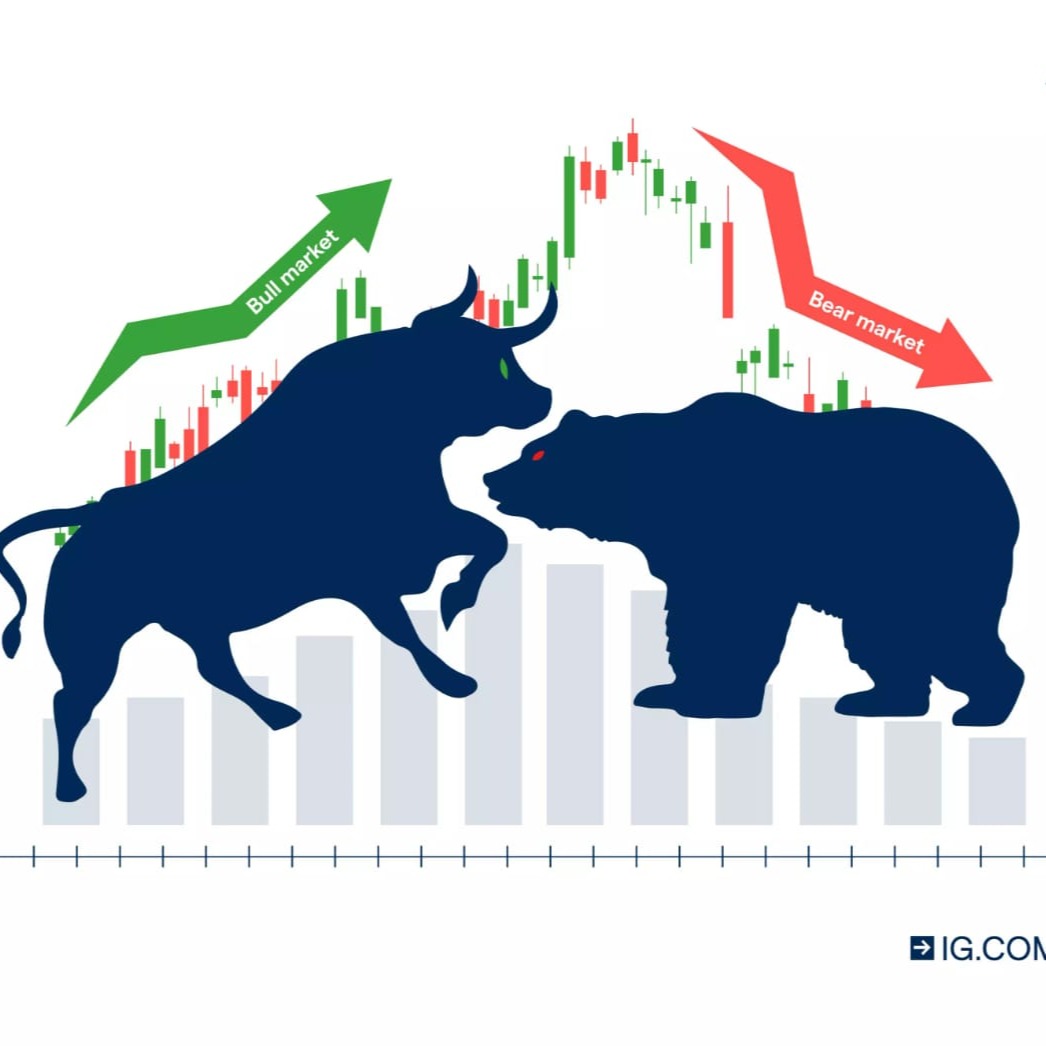
Цена DeepBook ProtocolDEEP
RUB
В листинге
₽3.12RUB
-2.28%1D
Цена DeepBook Protocol (DEEP) в Российский рубль составляет ₽3.12 RUB.
График цен DeepBook Protocol (RUB/DEEP)
Последнее обновление: 2025-12-15 00:56:12(UTC+0)
Конвертация DEEP на RUB
DEEP
RUB
1 DEEP = 3.12 RUB. Текущая цена конвертации 1 DeepBook Protocol (DEEP) в RUB составляет 3.12. Эта ставка указана только для справки.
Bitget предлагает самые низкие комиссии за транзакции среди всех основных торговых платформ. Чем выше ваш VIP-статус, тем выгоднее тарифы.
Текущий курс DeepBook Protocol в RUB сегодня
Сегодня актуальная цена DeepBook Protocol составляет ₽3.12 RUB, с текущей рыночной капитализацией ₽14.05B. Цена DeepBook Protocol снизилась на 2.28% за последние 24 часа, а объем торговли за 24 часа составил ₽897.13M. Коэффициент конвертации DEEP/RUB (DeepBook Protocol — RUB) обновляется в реальном времени.
Сколько Российский рубль стоит 1 DeepBook Protocol?
На данный момент цена DeepBook Protocol (DEEP) в Российский рубль оценивается в ₽3.12 RUB. Сейчас вы можете купить 1 DEEP за ₽3.12 или 3.21 DEEP за ₽10. За последние 24 часа самая высокая цена DEEP к RUB составляла ₽3.28 RUB, а самая низкая цена DEEP к RUB была на уровне ₽3.09 RUB.
Как вы думаете, вырастет или упадет сегодня курс DeepBook Protocol?
Всего голосов:
Рост
0
Падение
0
Данные голосования обновляются каждые 24 часа. Они отражают прогнозы сообщества относительно ценовой тенденции DeepBook Protocol и не должны рассматриваться как инвестиционный совет.
Рыночная информация о DeepBook Protocol
Показатели цены (24ч)
24ч
24ч минимум ₽3.0924ч максимум ₽3.28
Исторический максимум (ATH):
₽27.39
Изменение цены (24ч):
-2.28%
Изменение цены (7д):
-0.83%
Изменение цены (1г):
-58.06%
Рейтинг на рынке:
#164
Рыночная капитализация:
₽14,051,605,913.63
Полностью разводненная рыночная капитализация:
₽14,051,605,913.63
24 ч. объем:
₽897,132,327.34
Объем в обращении:
4.51B DEEP
Макс. предложение:
--
Аналитический ИИ-отчет о DeepBook Protocol
Основные события рынка криптовалют за сегодняПросмотреть отчет
История курса DeepBook Protocol (RUB)
Цена DeepBook Protocol изменилась на -58.06% за последний год. Самая высокая цена DEEP в RUB за последний год составила ₽27.39, а самая низкая цена DEEP в RUB за последний год составила ₽2.73.
ВремяИзменение цены (%) Самая низкая цена
Самая низкая цена Самая высокая цена
Самая высокая цена 
 Самая низкая цена
Самая низкая цена Самая высокая цена
Самая высокая цена 
24h-2.28%₽3.09₽3.28
7d-0.83%₽3.09₽3.56
30d-32.47%₽2.73₽4.77
90d-70.65%₽2.73₽12.13
1y-58.06%₽2.73₽27.39
Все время-40.70%₽0.8570(2024-10-14, 1 лет (год) назад)₽27.39(2025-01-19, 330 дней назад)
Каков максимальный курс DeepBook Protocol?
Исторический максимум (ATH) DEEP в RUB составлял ₽27.39 и был зафиксирован 2025-01-19. По сравнению с ATH DeepBook Protocol текущая цена DeepBook Protocol снизилась на 88.61%.
Каков минимальный курс DeepBook Protocol?
Исторический минимум (ATL) DEEP в RUB составлял ₽0.8570 и был зафиксирован 2024-10-14. По сравнению с ATL DeepBook Protocol текущая цена DeepBook Protocol увеличилась на 263.91%.
Прогноз курса DeepBook Protocol
Когда наступает благоприятное время для покупки DEEP? Стоит сейчас покупать или продавать DEEP?
Принимая решение о покупке или продаже DEEP, необходимо в первую очередь учитывать собственную торговую стратегию. Торговая активность долгосрочных и краткосрочных трейдеров также будет отличаться. Технический анализ Bitget DEEP может служить ориентиром для торговли.
В соответствии с Технический анализ DEEP на 4 ч. торговый сигнал — Активно продавать.
В соответствии с Технический анализ DEEP на 1 д. торговый сигнал — Активно продавать.
В соответствии с Технический анализ DEEP на 1 нед. торговый сигнал — Продавать.
Какой будет цена DEEP в 2026?
Согласно прогнозу годового роста в +5%, в 2026 г. цена DeepBook Protocol (DEEP) ожидается на уровне ₽3.45. Исходя из прогнозируемой цены на текущий год, совокупная доходность от инвестиции в DeepBook Protocol до конца 2026 г. достигнет +5%. Подробная информация: Прогноз цены DeepBook Protocol на 2025, 2026, 2030–2050 гг..Какова будет цена DEEP в 2030 году?
В 2030 году, исходя из прогноза годового роста на уровне +5%, цена DeepBook Protocol(DEEP) должна достичь ₽4.19; исходя из прогнозируемой цены на этот год, совокупная доходность инвестиций в DeepBook Protocol до конца 2030 года достигнет 27.63%. Подробная информация: Прогноз цены DeepBook Protocol на 2025, 2026, 2030–2050 гг..
Популярные акции
Мировые цены на DeepBook Protocol
Сколько сейчас стоит DeepBook Protocol в других валютах? Последнее обновление: 2025-12-15 00:56:12(UTC+0)
DEEP в ARS
Argentine Peso
ARS$56.14DEEP в CNYChinese Yuan
¥0.28DEEP в RUBRussian Ruble
₽3.12DEEP в USDUnited States Dollar
$0.04DEEP в EUREuro
€0.03DEEP в CADCanadian Dollar
C$0.05DEEP в PKRPakistani Rupee
₨10.95DEEP в SARSaudi Riyal
ر.س0.15DEEP в INRIndian Rupee
₹3.54DEEP в JPYJapanese Yen
¥6.09DEEP в GBPBritish Pound Sterling
£0.03DEEP в BRLBrazilian Real
R$0.21Как купить DeepBook Protocol(DEEP)

Создайте бесплатный аккаунт на Bitget
Зарегистрируйтесь на Bitget, указав свой адрес электронной почты/номер мобильного телефона, и придумайте надежный пароль для защиты учетной записи.

Верификация учетной записи
Подтвердите свою личность, введя персональные данные и загрузив действительное удостоверение личности с фотографией.

Конвертировать DEEP в RUB
Выбирайте криптовалюты для торговли на Bitget.
Часто задаваемые вопросы
Какова текущая цена монеты DeepBook Protocol?
Текущую цену монеты DeepBook Protocol можно проверить на бирже Bitget или других авторитетных платформах криптовалют.
Какие факторы влияют на цену DeepBook Protocol?
Факторы, влияющие на цену DeepBook Protocol, включают в себя рыночный спрос, динамику предложения, общие рыночные тренды и события внутри экосистемы DeepBook Protocol.
Увеличится ли цена DeepBook Protocol в будущем?
Хотя трудно предсказать будущие колебания цен, инвесторы часто анализируют рыночные тенденции и проекты, связанные с DeepBook Protocol, чтобы делать обоснованные прогнозы.
Где я могу купить DeepBook Protocol по лучшей цене?
Вы можете купить DeepBook Protocol по конкурентоспособным ценам на бирже Bitget, где вы можете воспользоваться различными торговыми опциями.
Является ли протокол DeepBook хорошей инвестицией?
Жизнеспособность протокола DeepBook как инвестиции зависит от индивидуального исследования и рыночных условий. Всегда учитывайте вашу толерантность к риску перед инвестированием.
Как цена DeepBook Protocol соотносится с историческим максимумом?
Цену DeepBook Protocol можно сравнить с её историческим максимумом, проверяя исторические данные по ценам на Bitget Exchange или различных платформах анализа криптовалют.
Каковы прогнозы цен на DeepBook Protocol на следующий год?
Прогнозы цен на DeepBook Protocol сильно варьируются и зависят от различных рыночных условий и анализов. Рекомендуется быть в курсе рыночных новостей и экспертных анализов.
Как я могу отслеживать ценовые тренды протокола DeepBook?
Ценовые тренды протокола DeepBook можно отслеживать с помощью инструментов рыночной аналитики и напрямую на платформах, таких как Bitget Exchange.
Есть ли предстоящие события, которые могут повлиять на цену DeepBook Protocol?
Предстоящие события, такие как обновления технологий или объявления о партнерстве, могут повлиять на цену DeepBook Protocol. Следите за новостями из официальных каналов.
Какова рыночная капитализация протокола DeepBook и как она влияет на его цену?
Рыночная капитализация протокола DeepBook отражает его общую рыночную стоимость, что может оказать влияние на восприятие инвесторов и динамику цен. Вы можете найти актуальную информацию о рыночной капитализации на бирже Bitget.
Какова текущая цена DeepBook Protocol?
Актуальная цена DeepBook Protocol составляет ₽3.12 за (DEEP/RUB) с текущей рыночной капитализацией ₽14,051,605,913.63 RUB. Стоимость DeepBook Protocol подвержена частым колебаниям из-за постоянной круглосуточной активности на криптовалютном рынке. Текущая цена DeepBook Protocol в реальном времени и ее исторические данные доступны на Bitget.
Каков торговый объем DeepBook Protocol за 24 часа?
За последние 24 часа торговый объем DeepBook Protocol составил ₽897.13M.
Какая рекордная цена DeepBook Protocol?
Рекордная цена DeepBook Protocol составляет ₽27.39. Это самая высокая цена DeepBook Protocol с момента запуска.
Могу ли я купить DeepBook Protocol на Bitget?
Можете. DeepBook Protocol представлен на централизованной бирже Bitget. Более подробную инструкцию можно найти в полезном гайде Как купить deepbook-protocol .
Могу ли я получать стабильный доход от инвестиций в DeepBook Protocol?
Конечно, Bitget предоставляет платформа для стратегического трейдинга с интеллектуальными торговыми ботами для автоматизации ваших сделок и получения прибыли.
Где я могу купить DeepBook Protocol по самой низкой цене?
Bitget предлагает одни из самых выгодных торговых комиссий и высокую ликвидность, обеспечивая комфортные условия для прибыльной торговли. Вы можете торговать на бирже Bitget.
Цены похожих криптовалют
Цена Solana (RUB)Цена Stellar (RUB)Цена XRP (RUB)Цена OFFICIAL TRUMP (RUB)Цена Ethereum (RUB)Цена Worldcoin (RUB)Цена dogwifhat (RUB)Цена Kaspa (RUB)Цена Smooth Love Potion (RUB)Цена Terra (RUB)Цена Shiba Inu (RUB)Цена Dogecoin (RUB)Цена Pepe (RUB)Цена Cardano (RUB)Цена Bonk (RUB)Цена Toncoin (RUB)Цена Pi (RUB)Цена Fartcoin (RUB)Цена Bitcoin (RUB)Цена Litecoin (RUB)
Где можно купить DeepBook Protocol (DEEP)?
Раздел с видео – быстрая верификация, быстрая торговля

Как пройти верификацию личности на Bitget и защитить себя от мошенничества
1. Войдите в ваш аккаунт Bitget.
2. Если вы новичок на Bitget, ознакомьтесь с нашим руководством по созданию аккаунта.
3. Наведите курсор на значок профиля, нажмите на «Не верифицирован» и нажмите «Верифицировать».
4. Выберите страну или регион выдачи и тип документа, а затем следуйте инструкциям.
5. Выберите «Верификация по мобильному» или «ПК» в зависимости от ваших предпочтений.
6. Введите свои данные, предоставьте копию вашего удостоверения личности и сделайте селфи.
7. Отправьте вашу заявку, и вуаля, вы прошли верификацию личности!
Купить DeepBook Protocol за 1RUB
Приветственный бонус 6200 USDT для новых пользователей!
Купить DeepBook Protocol
Инвестирование в криптовалюты, включая покупку DeepBook Protocol онлайн на Bitget, подразумевает риски. Bitget предлагает легкие и удобные способы покупки DeepBook Protocol и делает все возможное, чтобы предоставить полную информацию о криптовалюте, представленной на бирже. Однако платформа не несет ответственность за последствия вашей покупки DeepBook Protocol. Вся представленная информация не является рекомендацией покупки.
Конвертация DEEP на RUB
DEEP
RUB
1 DEEP = 3.12 RUB. Текущая цена конвертации 1 DeepBook Protocol (DEEP) в RUB составляет 3.12. Эта ставка указана только для справки.
Bitget предлагает самые низкие комиссии за транзакции среди всех основных торговых платформ. Чем выше ваш VIP-статус, тем выгоднее тарифы.
Ресурсы
Рейтинг DeepBook Protocol
4.4
Тэги:
Контракты:
0xdeeb...p::DEEP(Sui Network)
Bitget Идеи

BGUSER-SNXYLE69
2025/10/02 04:50
friends
$DEEP its my opinion 1$ and 10$ 😜 so what's ur opinion ? comment now 0.12
DEEP+0.51%

ScalpingX
2025/09/29 08:33
$DEEP - Mcap 426,44M$ - 88%/ 43,4K votes Bullish
SC02 M5 - pending Long order. Entry is within HVN + not affected by any weak zone, estimated stop-loss around 1.47%. The uptrend is in the 199th cycle, advance amplitude 11.85%.
#TradingSetup #CryptoInsights
DEEP+0.51%

Jahanzaib_Gondal
2025/09/18 04:25
$ZKC: Game Time. Analyzing the New $ZKC Power on Bitget.
Subtitle: The buzzer beater has sounded. $ZKC the native token for the elite zkSync ecosystem, is now live for trading on Bitget. We break down the pre-game analysis and the potential plays ahead.
Let's get straight to the scouting report.
The Player: Who is $ZKC?
$ZKC isn't just another name on the roster. It's the utility token for zkSync Era, a top-tier Layer-2 blockchain using advanced zero-knowledge (ZK) proofs to scale Ethereum. Think of it as the fuel and the franchise player for a faster, cheaper Ethereum experience.
· Position: Utility Token / Ecosystem Driver
· Key Stats: Powers network security, pays gas fees via account abstraction, and governs the future of the zkSync protocol.
· Draft Position: Highly touted prospect with a strong technical foundation.
The Market: First Quarter Analysis
The opening minutes of a new listing are all about volatility and momentum. $ZKC is hitting the court with a few key advantages:
· Strong Bench (Ecosystem): zkSync isn't a rookie. It has a deep bench of DeFi apps, NFTs, and users already playing on its network. This isn't a build-from-scratch project.
· Crowd Hype (Demand): Launching on a major exchange like Bitget provides instant liquidity and access to a global audience of traders. Expect a high-volume opening.
· The Game Plan (Tokenomics): The token is designed to be used, not just held. Real utility creates real demand.
Key Resistance Level (The Defense to Break): $0.95 - $1.05 This is the first major test.A strong breakout above this zone on high volume could signal a run-up.
Key Support Level (The Home-Court Advantage): $0.65 - $0.75 This is the floor.Holding this level is critical for maintaining bullish momentum. A break below could see a retreat to find stronger support.
The Playbook: Price Prediction Scenarios
This is not financial advice. This is a game plan based on market mechanics.
· Bull Case (The Championship Run): If Bitcoin holds strong and the altcoin market rallies, $ZKC's unique narrative could make it a standout performer.
Short-term target: $1.50 - $2.00. This would require sustained buying pressure and overall market greed.
· Base Case (A Solid Season): The most likely scenario is consolidation after the initial listing frenzy. Price action chops between $0.80 and $1.20 as the market digests the initial supply and demand. This is healthy for long-term growth.
· Bear Case (An Off Night): If the broader crypto market sells off, all new listings are vulnerable. A break below key support could see a test of $0.50 or lower. This is a risk every trader must account for.
Final Buzzer: How to Play It
1. Watch the Volume: High volume on green candles = strong buying interest. Low volume on pumps = a potential fakeout.
2. Track BTC: If Bitcoin tanks, it's hard for any altcoin, especially a new one, to rally. Know the macro climate.
3. Manage Your Risk: This is a new, volatile asset. Size your position accordingly. Don't go all-in on the first play.
$ZKC is now live. The game is on.
BTC+0.34%
FUEL0.00%

YASIRALICTRADER🌟
2025/09/18 03:13
📊🔥 BTC Exchange Reserves Drop to Multi-Year Lows: What It Means for Price Action
The Bitcoin market has just hit a critical milestone: exchange reserves are now at multi-year lows. This development is more than just a data point—it’s a powerful signal of shifting market dynamics, investor sentiment, and long-term price potential. For traders, institutions, and retail holders alike, this trend could reshape how Bitcoin behaves in the months ahead. Let’s dive deep into what this means. 🚀
---
✨ 📉 BTC Exchange Reserves Explained
What are Exchange Reserves?
Exchange reserves represent the total amount of Bitcoin held in wallets controlled by centralized exchanges.
Why it Matters?
When reserves drop, it typically means fewer coins are available for immediate selling, suggesting that investors are moving their BTC to cold storage for long-term holding.
---
🚀 🐂 Supply Shock in the Making?
With fewer coins on exchanges, liquidity shrinks.
A shrinking supply often leads to a supply-demand imbalance, which can trigger sharp upward movements in price when demand increases.
This pattern has historically aligned with bullish rallies, particularly when reserves hit extreme lows.
---
📊 On-Chain Data Insights
Multi-year lows in reserves reflect a trend similar to pre-bull market phases in previous cycles.
Large holders (whales) are accumulating and moving BTC to cold wallets.
Institutional-grade custodianship is on the rise, indicating growing long-term confidence.
---
⚡ Key Investor Takeaways
📉 Less BTC available to sell → Lower selling pressure.
📈 Higher probability of price appreciation as demand meets reduced supply.
🐋 Whale accumulation signals smart money positioning for the next leg up.
---
🌍 Broader Market Implications
A decline in reserves could reduce volatility in the short term, as panic selling becomes harder with fewer coins on exchanges.
Long-term, it may amplify bullish momentum if mainstream demand surges—especially with ETFs and institutional inflows accelerating.
This aligns perfectly with the “digital gold” narrative as more investors treat Bitcoin as a long-term store of value rather than a trading asset.
---
🔮 Outlook: What’s Next for BTC?
If exchange reserves continue falling, expect higher resistance to downside pressure.
Potential catalysts like ETF inflows, Fed policy shifts, and global liquidity trends could magnify the impact of low reserves.
The stage may be set for another historic BTC rally, with scarcity as the fuel and institutional adoption as the spark.
---
✅ Final Thoughts
The drop in BTC exchange reserves is not just a technical metric—it’s a macro signal. Investors are pulling Bitcoin off exchanges because they believe in its long-term potential. As reserves decline, the supply squeeze narrative strengthens, setting Bitcoin up for possible explosive price movements in the near future.
👉 In short: Low reserves = strong hands = bullish signal. 🐂🔥
---
BTC+0.34%
FUEL0.00%

BGUSER-VSKY448K
2025/09/18 01:41
$SPON another deep dumpbin
DEEP+0.51%
Торговать
Earn
DEEP доступен для торговли на Биржа Bitget и может находиться под стражей на Bitget Wallet. Биржа Bitget также является одной из первых платформ CEX, поддерживающих DEEP сделок.
Вы можете торговать DEEP на Bitget.DEEP/USDT
СпотDEEP/USDT
Фьючерсы USDT-MЦены недавно добавленных монет на Bitget








